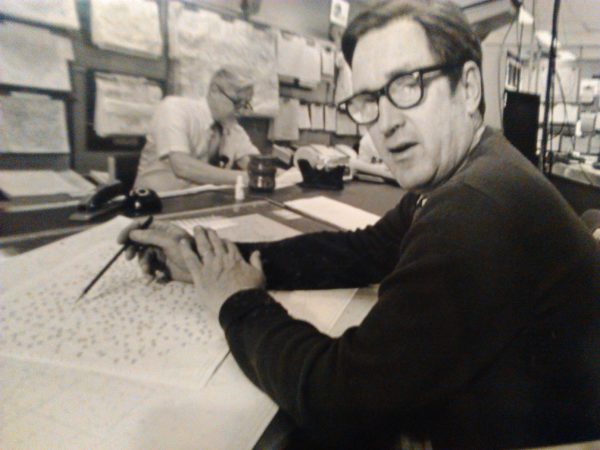April 2, 1974: Director of the National Severe Storms Forecast Center Calling
On the morning of April 2, 1974, Mr. Robert Ferry, the Meteorologist in Charge of the National Weather Service Forecast Office in Birmingham received a call from Allen Pearson, Director of the National Severe Storms Forecast Center in Kansas City. Dr. Pearson started the call by asking about the tornadoes that had popped through the state of Alabama the night before.
Three F2 tornadoes and one F3 tornado produced some damage and one fatality. The latter, near Huntsville, had caused damage in the Research Park and Sherwood neighborhoods, killing one man in a mobile home. Around 6:05 p.m., an F3 tornado cut a 16.3-mile path across Tuscaloosa County from Samantha to Moores Bridge. Around 9:30, an F2 tornado skipped across Blount County, destroying several mobile homes in a mobile home park near Oneonta and heavily damaging or destroying 7 site-built homes. Lastly, an F2 tornado touched down briefly in Chambers County around 2 a.m. early the next morning, but its damage was limited to a wooded area. Mr. Ferry said that although things had been bad, they could have been a lot worse.
Dr. Pearson told Mr. Ferry that if he thought the April Fool’s Day weather was rough, just wait until Wednesday. It was already apparent to forecasters that a massive outbreak of severe weather was likely the next day. A strong upper-level trough was located over the Great Basin of the western U.S. A broad area of surface low pressure was centered over Colorado, Utah, and Wyoming. The central pressure was already down to 991 millibars. This dynamic low-pressure system was poised to bring copious amounts of rich Gulf moisture northward.
Pearson was notifying National Weather Service Offices across a large area east of the Mississippi River that there would be a large tornado outbreak over the next two days. He asked that the field offices prepare for the potential severe weather by performing maintenance on their equipment and radars. He also asked the MICs to alert personnel that some might be asked to work extra hours or be called in to work on their off day. Preparations were made for the ATS-3 satellites to be operated in a severe weather mode the following day. Special balloon releases were set for midnight that night.
Tornado watches were posted by the evening hours across parts of Texas, Oklahoma, and Arkansas. Severe weather reports were minimal from this opening round of weather from the powerful system. Forecasters knew trouble was brewing, but had no idea how bad it would be.
A total of 148 tornadoes occurred in 24 hours across the eastern United States, including 30 violent tornadoes. At least 315 people were killed in eleven states, including 34 people that died in the town of Xenia, Ohio alone. Damage totaled $500 million. Alabama was one of the hardest-hit states.
Tornado watches were in effect by 10 a.m. Storms started to fire around noon. A strong thunderstorm crossed the Birmingham metro area around 4 p.m., causing a brief tornado near Concord in the western part of the county. More tornadoes occurred during the late afternoon in the northeastern part of the state. But the main action was just beginning over the Northwest part of the state.
At 6:30 p.m. CDT, a tornado touched down in Franklin County near Newburg. This tornado was described in warnings as “big and powerful and taking everything in its path.” This tornado caused severe damage across Lawrence County, Limestone County, and Madison County before moving into Tennessee. The twister was on the ground for 85 miles. It killed 28 in Alabama.
At 7:25, a second tornado touched down near the first tornado’s path and paralleled its track, separated by less than two miles along the fifty miles it was on the ground in Alabama. Many communities were struck by two tornadoes less than thirty minutes apart.
At the same time, trouble was brewing further to the south. At 7:00, a tornado touched down near Aliceville in Pickens County. It remained on the ground for 120 miles, plowing into the downtown area of Jasper at 7:58 p.m. reaching Cullman at 8:40 p.m.
About that same time, at 8:50 p.m. CDT, the most powerful tornado of the night in Alabama touched down in Lamar County. It roared into the Marion County town of Guin at 9:04 p.m. CDT. Twenty-three people died in the town. The tornado roared on to the northeast. Dramatic radar reports indicated that the parent storm was moving at 120 mph!
The tornado lifted, but a second tornado formed from the same parent storm and roared into south Huntsville. The tragic toll in the state on that stormy night: eight tornadoes, 86 people killed, and nearly one thousand injured.
Category: Alabama's Weather, ALL POSTS, Met 101/Weather History
















